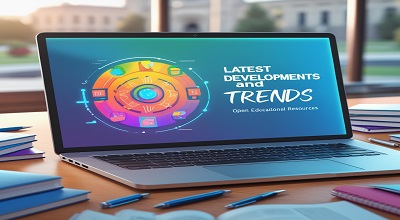Open Educational Resources (OER)
Open Educational Resources (OER) are teaching, learning, and research materials that are freely available for anyone to access, use, adapt, and share. These resources include everything from textbooks and lecture notes to videos, quizzes, and entire courses. OER are released with open licenses that allow users to engage with them in various ways. Such as copying, modifying, distributing, and even commercializing the materials, provided they comply with the terms of the license.
The core idea behind OER is to make quality educational resources universally available to everyone, regardless of their location or financial situation. By removing barriers to access, OER has the potential to make learning more inclusive, equitable, and sustainable.
The Evolution of Open Educational Resources (OER)
Early Beginnings
The concept of Open Educational Resources dates back to the late 20th century. Although the roots of open knowledge can be traced further back to early educational movements. The earliest precursor to OER began in the 1960s and 1970s. When educational institutions first started making their resources available online. However, it was not until the early 2000s that OER gained formal recognition as a global initiative. The term “open educational resources” was coined in 2002 by the United Nations Educational. Scientific and Cultural Organization (UNESCO) during a forum aimed at promoting free educational access.
Role of Licensing
The success of OER is largely attributed to the development of open licenses. Such as those created by Creative Commons. These licenses allow educators and organizations to share materials. While retaining some level of control over how those materials are used. Creative Commons licenses, for instance, let authors specify whether others can adapt, remix, or even sell their resources. These licenses have made it much easier to share educational materials without the fear of copyright infringement.
Institutional Support
Over time, various educational institutions, governments, and organizations began to support the use of OER. Major universities such as MIT (Massachusetts Institute of Technology) launched initiatives like MIT OpenCourseWare, which made course materials freely available to the public. Governments around the world also took steps to promote OER by developing national strategies, funding initiatives, and encouraging the development of open textbooks.
Types of Open Educational Resources
OER can take many forms, depending on the type of content being provided. The following are the primary categories of OER:
Textbooks
Open textbooks are full-length textbooks that are published with an open license. They can be downloaded, printed, and distributed for free. Some OER platforms even offer interactive versions of textbooks with multimedia elements, quizzes, and exercises to enhance learning.
Lecture Notes and Presentations
Lecture notes and presentations are often shared by instructors to complement class lessons. These materials are usually formatted as text documents. Or slide decks that can be edited and redistributed by other educators. This enables other teachers to adapt the content to their own curriculum or teaching style.
Videos and Multimedia
Videos, animations, and other multimedia elements are also considered OER. Educational videos can cover a wide range of topics, from science experiments to historical documentaries. Platforms like YouTube and Vimeo host many educational channels, and these resources are often licensed under Creative Commons.
Benefits of OER
Cost Savings
Digital textbooks, online courses, and open educational resources (OER) can reduce the cost of educational materials, making education more affordable for students.
Flexibility and Customization
OER allow educators to tailor learning materials to fit the needs of their students. Since OER are often released under open licenses, teachers can adapt, modify. And remix the content to create a curriculum that aligns with their teaching goals. This level of customization is not possible with traditional textbooks. Which are often fixed in terms of content and structure.
Enhanced Access to Information
Technology, especially the Internet, provides students with access to a vast amount of information and educational resources. This enables self-directed learning and research, empowering students to explore topics beyond the confines of textbooks and classrooms.
Global Impact of OER
OER have had a significant impact on education worldwide. They have democratized access to knowledge, allowing learners from diverse backgrounds to benefit from high-quality educational materials. In regions with limited access to traditional educational resources, OER has been particularly transformative, providing opportunities for self-paced learning and skill development.
Future of OER
The future of OER looks promising, with ongoing efforts to expand and improve these resources. Advancements in technology, such as artificial intelligence and virtual reality, are being integrated into OER to create more interactive and engaging learning experiences. Additionally, there is a growing emphasis on cultural inclusivity, ensuring that OER reflects diverse perspectives and is accessible to learners worldwide.
FAQs (Open Educational Resources (OER))
What are Open Educational Resources (OER)?
Open Educational Resources (OER) are teaching, learning, and research materials that are freely available for anyone to access, use, adapt, and share. These resources include textbooks, lecture notes, videos, quizzes, and entire courses, all released under open licenses.
